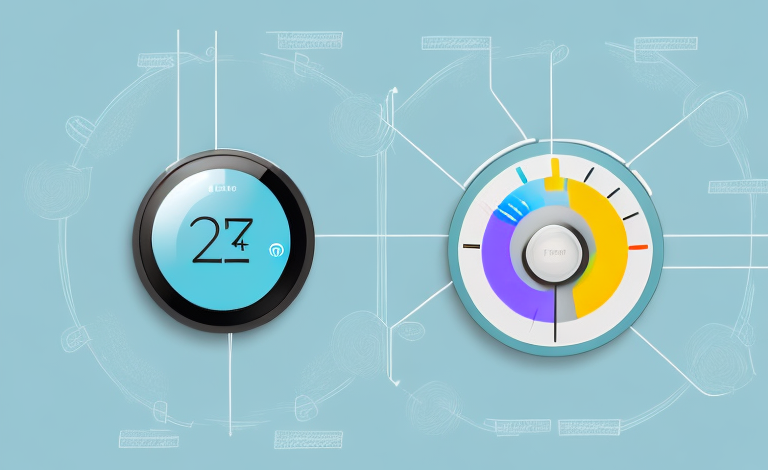In recent years, smart home technology has become increasingly popular, with many homeowners opting to use smart doors. But with the increasing popularity of these devices, hackers are finding new and creative ways to exploit potential vulnerabilities. In this article, we’ll discuss the benefits and risks of using a smart door, how they work, possible vulnerabilities that attackers might exploit, and ways to protect your smart door from being hacked.
The benefits of smart doors
Smart doors offer many benefits to homeowners, including convenience, increased security, and remote monitoring. For example, they allow you to easily control your front door from your smartphone or tablet, eliminating the need for traditional keys. Plus, you can conveniently grant access to family members, friends, or service workers without having to give them physical keys.
In addition, smart doors come with advanced security features such as motion sensors and video cameras which can help you keep an eye on your property at all times. You can also receive alerts whenever someone enters or exits your home, allowing you to keep tabs on who’s coming and going in real-time.
Another benefit of smart doors is that they can integrate with other smart home devices, such as security systems and lighting. This means that you can create a fully automated and secure home environment that can be controlled from a single app. For example, you can set your smart door to automatically lock when your security system is armed, or have your lights turn on when you unlock your front door at night.
The risks of using smart doors
Despite the many benefits they offer, smart doors also come with potential risks that homeowners should be aware of. One of the most significant risks is that your smart door can be hacked by cybercriminals who want to gain access to your home or steal your sensitive data.
Other potential risks include system malfunctions, software bugs, and human error. For example, if you accidentally leave your smartphone or tablet unlocked, someone else may be able to control your smart door without your knowledge.
Another risk of using smart doors is that they may not be compatible with all types of home security systems. This can leave your home vulnerable to break-ins and other security breaches. Additionally, smart doors may require frequent updates and maintenance to ensure that they are functioning properly, which can be time-consuming and costly.
It is also important to note that smart doors may not be suitable for all homeowners, particularly those who are not comfortable with technology or who have limited access to the internet. In these cases, traditional locks and keys may be a better option.
Understanding how smart doors work
Smart doors work by using a combination of hardware and software components to control access to your home. The hardware components usually include a door lock, a motion sensor, a video camera, and a Wi-Fi receiver. The software components support these hardware components by providing an intuitive user interface that allows you to control your smart door from your smartphone, tablet, or computer.
Once your smart door is set up, you can use your smartphone or tablet to unlock the door remotely from virtually anywhere in the world. Some smart doors even allow you to use voice commands to open or close the door, making them even more convenient to use.
Smart doors also come with additional security features such as two-factor authentication, which requires a user to provide two forms of identification before granting access. This ensures that only authorized individuals can enter your home. Additionally, some smart doors have the ability to send alerts to your phone or email if someone tries to tamper with the lock or if the motion sensor detects movement when you’re not home.
Another advantage of smart doors is that they can be integrated with other smart home devices, such as security cameras and smart lights. This allows you to create a comprehensive home security system that can be controlled from a single app on your phone or tablet.
Potential vulnerabilities in smart door systems
Despite their many benefits, smart doors are not immune to potential vulnerabilities that attackers can exploit. Some of the most common vulnerabilities include weak passwords, unsecured Wi-Fi networks, outdated software, and weak encryption methods.
For example, a hacker might take advantage of a weak password to gain access to your smart door or use an unsecured Wi-Fi network to intercept your smart door signals. They might also exploit outdated software or weak encryption methods to bypass your smart door’s security measures.
Another potential vulnerability in smart door systems is the lack of regular software updates. Manufacturers may release updates to fix security flaws or improve the system’s overall performance, but if the user fails to install these updates, their smart door could remain vulnerable to attacks. Additionally, some smart door systems may collect and store personal data, such as user names and passwords, which could be compromised in the event of a data breach.
Common hacking methods used to target smart doors
Cybercriminals use a variety of methods to target and exploit smart doors. Some of the most common methods include brute force attacks, social engineering, and phishing scams.
Brute force attacks involve a hacker using automated software to try every possible combination of login credentials until they successfully gain access. Social engineering involves the attacker tricking you into revealing sensitive information, such as your password or account details, through manipulation or deception. Phishing scams, on the other hand, involve the attacker tricking you into clicking on a malicious link or downloading a malicious attachment that can compromise your smart door system.
Another common method used by hackers to target smart doors is known as “wardriving.” This involves driving around a neighborhood with a device that can detect and exploit vulnerabilities in wireless networks. Once a vulnerable network is found, the hacker can gain access to the smart door system and potentially control it remotely.
Real-world examples of smart door hacks
The number of smart door hacks is steadily increasing, with a few high-profile cases making the news recently. In 2019, for example, researchers found a critical vulnerability in a popular smart door system that allowed an attacker to unlock the door remotely. In another case, a hacker was able to remotely access a smart door’s video camera to spy on a homeowner.
Furthermore, smart door hacks have also been used in physical break-ins. In one instance, burglars were able to hack into a smart door system and disable the alarm, allowing them to enter the home undetected. In another case, a hacker was able to gain access to a smart door’s code and create a duplicate key, which they used to enter the home. These real-world examples highlight the importance of securing smart door systems and regularly updating their software to prevent vulnerabilities.
How to protect your smart door from being hacked
To protect your smart door from potential attacks, there are several steps you can take. First, make sure to use strong and unique passwords for your smart door system, and never share them with anyone.
Second, ensure that your Wi-Fi network is secure with the latest encryption protocols such as WPA3 or WPA2. It’s also a good idea to change your Wi-Fi password periodically to prevent unauthorized access.
Finally, always keep your smart door’s software up to date and only download updates from trusted sources. Additionally, consider using a security solution that can proactively identify and block potential threats to your smart door.
Best practices for securing your home’s smart door system
To ensure the security of your home’s smart door system, it’s important to follow some best practices. Firstly, always keep your smart door locked, even when you’re at home.
Secondly, consider disabling features that you don’t need, such as remote access, if you’re not using them. This can reduce your smart door’s attack surface and minimize the risk of a successful hack.
Finally, monitor your smart door’s activity regularly to check for any unusual or suspicious behavior. This can help you catch hackers early and minimize potential damage to your home and data.
The role of manufacturers in preventing smart door hacks
Smart door manufacturers play a vital role in preventing hacks and keeping your home’s security system up-to-date. They should provide regular software updates, take measures to eliminate vulnerabilities, and educate users about potential risks and best practices for securing their smart door systems. Manufacturers should also invest in security testing and use encryption methods to ensure that smart doors are secure by design.
The future of smart door security features
As smart door technology continues to evolve, we can expect to see more advanced security features emerge. For example, some manufacturers are already using biometric authentication, such as fingerprint scanning, to provide an extra layer of security.
We may also see the integration of artificial intelligence and machine learning in smart doors to help identify and block potential threats automatically. As with any technology, it’s essential to stay informed and keep up with the latest security features to ensure that you’re doing everything possible to keep your smart door secure.
Comparing the security of different types of smart locks
Smart locks come in different forms, including keypad locks, biometric locks, and proximity locks. Each type has its advantages and disadvantages when it comes to security, convenience, and ease of use.
Keypad locks are the most widely used and offer the most convenience, with the ability to create custom codes and easily share codes with family members or service workers. Biometric locks offer the highest level of security, using fingerprint scanning or facial recognition technology to determine access. Proximity locks, on the other hand, use Bluetooth or Wi-Fi to automatically unlock the door when you approach it, making them easy and convenient to use.
Smart door security and its impact on insurance policies
As more homeowners opt for smart door technology, insurance companies are starting to take notice. Some insurers now offer discounts or other incentives for homeowners who use smart doors, believing that smart doors can reduce the risk of theft or burglary. However, some insurers also require homeowners to follow specific security protocols, such as regular monitoring and the use of approved security solutions, to maintain insurance coverage.
What to do if your smart door is hacked: Steps to take immediately
If you suspect that your smart door is hacked, it’s essential to take immediate action to minimize the potential damage. Firstly, disconnect your device from the internet and your Wi-Fi network to prevent further access.
Secondly, contact the manufacturer of your smart door system or a security professional to help diagnose and resolve the issue. Additionally, consider changing all the passwords on your Wi-Fi network and other accounts that use the same password. Finally, report the hack to the relevant authorities, such as law enforcement or your internet service provider.
Conclusion
Smart doors offer many benefits to homeowners, but they also come with potential risks that can be exploited by hackers. By understanding how these devices work, potential vulnerabilities, and common hacking methods used to target them, homeowners can take steps to protect their smart doors and maintain their security. By following best practices for securing smart doors, staying up-to-date on the latest security features, and working with reputable manufacturers, homeowners can embrace the convenience and security offered by smart door technology while minimizing potential risks.



